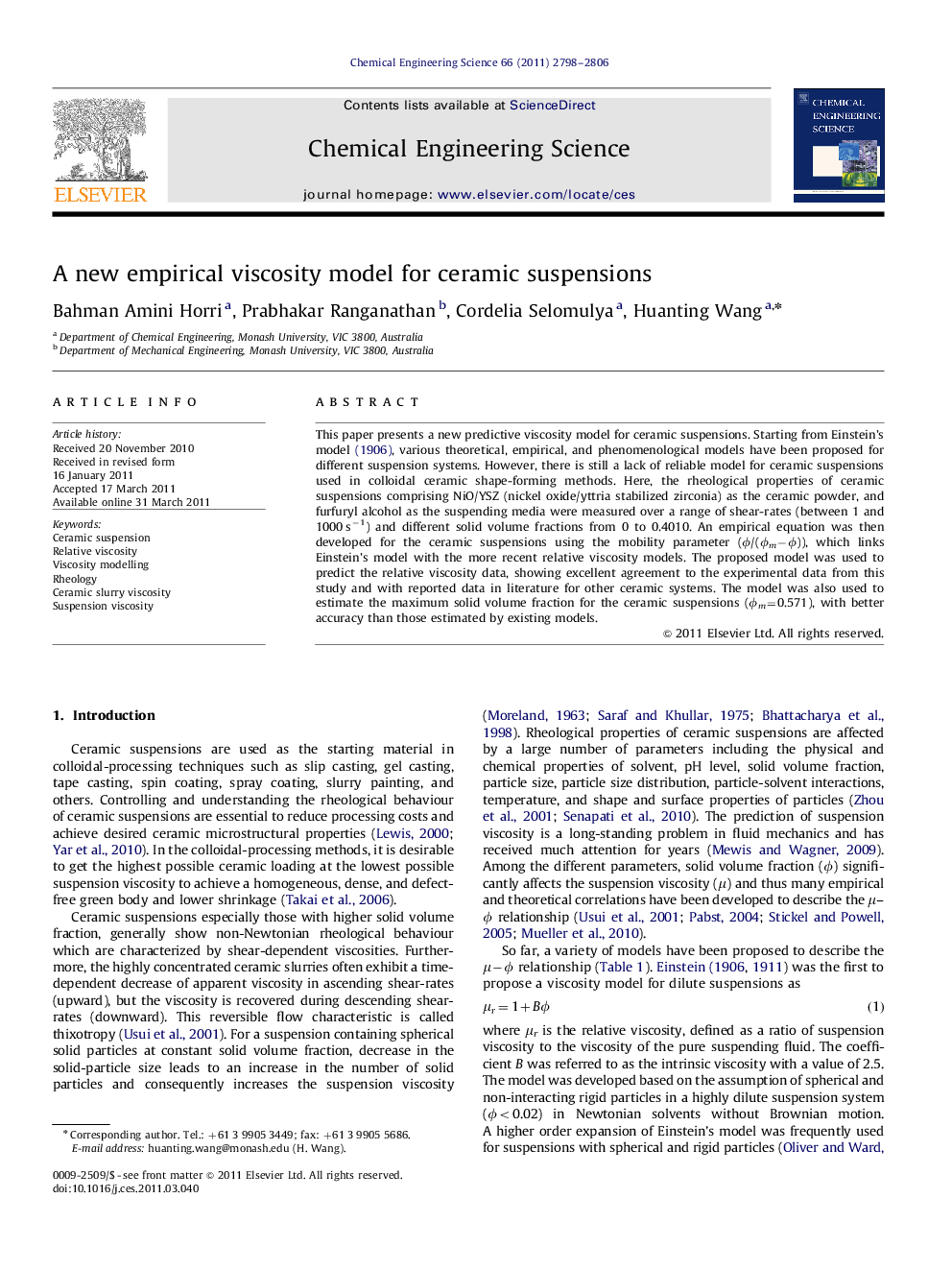| Article ID | Journal | Published Year | Pages | File Type |
|---|---|---|---|---|
| 156357 | Chemical Engineering Science | 2011 | 9 Pages |
This paper presents a new predictive viscosity model for ceramic suspensions. Starting from Einstein's model (1906), various theoretical, empirical, and phenomenological models have been proposed for different suspension systems. However, there is still a lack of reliable model for ceramic suspensions used in colloidal ceramic shape-forming methods. Here, the rheological properties of ceramic suspensions comprising NiO/YSZ (nickel oxide/yttria stabilized zirconia) as the ceramic powder, and furfuryl alcohol as the suspending media were measured over a range of shear-rates (between 1 and 1000 s−1) and different solid volume fractions from 0 to 0.4010. An empirical equation was then developed for the ceramic suspensions using the mobility parameter (ϕ/(ϕm−ϕ)), which links Einstein's model with the more recent relative viscosity models. The proposed model was used to predict the relative viscosity data, showing excellent agreement to the experimental data from this study and with reported data in literature for other ceramic systems. The model was also used to estimate the maximum solid volume fraction for the ceramic suspensions (ϕm=0.571), with better accuracy than those estimated by existing models.
